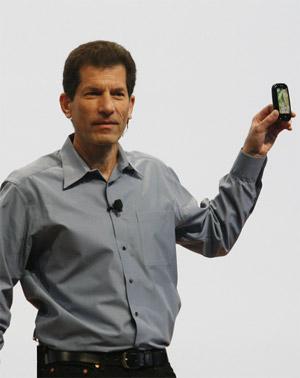
"A man's got to know his limitations." I cannot believe that I just quoted Clint Eastwood. I guess this officially means that I choose the next movie rental in my household. But I digress. On the heels of Palm CEO Jon Rubinstein’s declarations concerning the company’s future, a potential buyout of Palm, Inc. has been all the buzz. So the question on everyone’s mind is whether a buyout will breathe some life back into the Palm products or be a nail in Palm’s coffin. As a smartphone newbie who loves her Palm Pre Plus, my question is how did it get to this point?
Over a decade ago, I was one of the many Palm Pilot users awe-struck by the new fad of electronic organization. Palm and PDA were synonymous and the smartphone was just a twinkle in the cell phone industry’s eye. Though the playing field of today’s smartphone revolution is clearly different, there is no question that Palm continues to have a very recognizable, strong brand name. So as a once forerunner in the PDA market, how did Palm lose steam when it came to the natural progression of smartphones?
Many of us can agree that one of the main reasons for Palm’s current predicament is poor marketing. A decent ad campaign and overall marketing plan not only facilitates consumer awareness and knowledge of a product, but also drives interest and demand. Needless to say, a poor or lacking campaign translates into the opposite. And let’s face it, if your friends, family and coworkers aren’t buying a Palm smartphone, likely you aren’t either. We tend to perceive value and demand products based upon what we see others using and wanting.
To be fair, advertising cannot be the full story and is not entirely to blame. In my opinion, two other factors played into the equation - inadequate employee training and lacking retail inventory. Having personal experience with both, I can honestly say that these are definitely contributors to Palm’s lackluster sales.
At the first Verizon store I visited in my quest for the perfect smartphone earlier this year, I was surprised to learn they didn’t carry the Palm phones. The saleswoman informed me that they didn’t stock the Palms because “customers were interested in them.” Pretty self-predicating in my opinion. How could anyone be interested in a phone that they can’t see or touch, and maybe don’t even know exists, because it is not on the shelf? The saleswoman went on to state that she could order one for me, but that when she did have a brief experience with a Palm Pre Plus, she couldn’t figure out how to turn it on. Wow, ringing endorsement.
The second retail store I went to did have the Pre Plus and Pixi Plus on display, but presented a different challenge. The sales representative actually confessed that he owned the Pre Plus but switched over to the Droid after a week because he couldn’t figure out the gestures. He then went on to show me the Droid and even the then yet-to-be released Motorola Devour online. At this point, I had almost given up entirely on the Palm Pre Plus, but I am glad I ultimately followed my instinct and went forward with purchasing one (albeit from another, more deserving retailer).
All in all, webOS is a smart, intuitive and fun operating system and should have had a greater impact on the smartphone industry, especially considering the fact that it has received praise across the board. I am not sure that Palm could have affected the market share of some of the big hitters, but with webOS' multitasking, email integration and web capabilities, it surely should have interested more business users. While many have faulted Palm’s design and the cited need for a full touchscreen, this argument doesn’t hold up when you consider the fact that Blackberry has a strong hold on its market with similar styling and design, and - in my opinion - less function.
So is a buyout the answer? In a word - maybe. If slashing prices and offering free mobile hotspot service (along with a new ad campaign) is not enough to sway the masses, then some sort of drastic change is certainly needed. Maybe a different company with a new vision can revamp Palm and restore some of its former glory. Or maybe the change needs to come from within. No matter the direction, I think we can all agree that the current course isn’t working for Palm, but that webOS is something special and should not be put out to pasture.